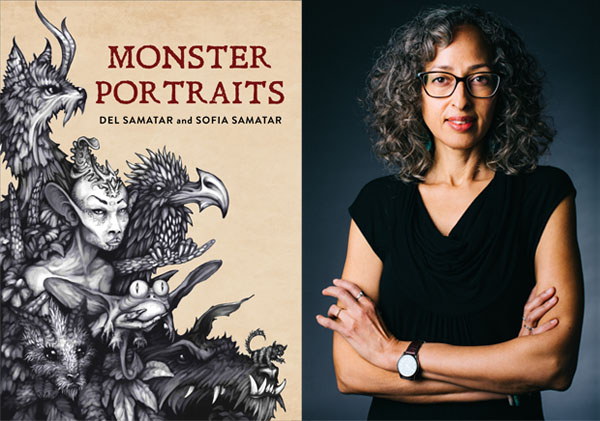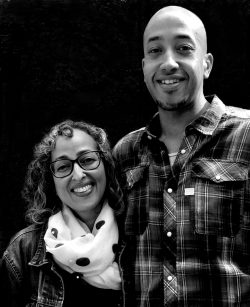“Am I a monster, or is this just what it means to be a person?”
Exploring the depths of human nature and discovering the worst, or discovering that the worst isn’t so awful, was the subject of a well-attended reading for students at Rockland Banquet on February 21st by Sofia Samatar who read extracts of her new book of poetry, illustrated by her brother Del.
Sofia and Del Samatar were invited to campus by the English department to share their contemplation of this subject throughout her newest book, Monster Portraits.
Sofia is a visionary and exhilarator of a writer. Her writing has received the World Fantasy Award, the British Fantasy Award, and the American Science Fiction Fantasy Award in 2015, 2016, and 2019. In addition to her writing, she teaches African literature, Arabic literature, and speculative fiction at James Madison University. Del Samatar, her brother, holds a BA in Fine Arts from Rutgers University. He lives in New Jersey, where he is pursuing a career as a tattoo artist.
Sofia and Del collaborated on this compilation of short stories. The siblings set out to tell their story from the perspective of monsters. They engage productively in order to address issues of race, language, and gender. The book is a mash-up of numerous things, representing the hardships its writers endured as children, and the monsters themselves visually represent this identity struggle. They related the theme of marginalization through the aesthetic representation of these monsters. Students got the opportunity to hear her read straight from her work, as well as ask her and Del questions about the artistic decisions behind Monster Portraits.
Monster Portraits is a haunting yet fascinating autobiography that explores monsters as a metaphor for isolation and otherness, particularly the otherness of Somali Americans in the 1980s. Monster Portraits uses creepy, intriguing writing and stunning, cryptic images to understand persons who transcend boundaries and find themselves as outsiders. The project was image-driven, according to the Samatars, with Sofia extrapolating tales from Del’s drawings. Del’s monster illustrations are fascinating, complex, and detailed, adding to and enlivening the reader’s journey through the book.
“The pictures came first,” Samatar said. “Del drew the pictures and he would send them to me, I would look at them, think about them, meditate on them, and then come up with a story for this monster.”
Samatar admitted that collaboration was new to her, but that it had its benefits. “I have never done a project like this before,” she said, “and I loved it because it takes away starting with a blank page. It’s not like I wrote something and he illustrated it, it’s more like he made pictures and I illustrated them with words.”
Throughout the book, Sofia analyzes the complexity and ethnic ambiguity of biracial, transnational identity, as well as how such issues provide a place for writing. Her imagined worlds are a reflection of reality in many ways. In this case, they reflect marginalized people who are seen as less-than-human by some members of the larger society.
During their visit, students also had the privilege to actively collaborate with Sofia. She visited several literary classes at Stevenson and worked with student writers who are interested in publishing their work.
Ashley Kniss, Stevenson’s writing coordinator, and English professor hosted Samatar in her American Monsters class.
“In this class, we look at the ways in which marginalized peoples in American culture have been coated as monstrous which is like a method of dehumanization,” Kniss said.
“Samatar is a good fit for our department and for Stevenson University as a whole” Kniss said. “Our department is interested in equity and exploring marginalized voices. These monsters and the portraits and stories that she tells, feature these marginalized voices and what it is like to be among that group of people.”
Kniss praises not only this message but the form. “Poetry tells our stories,” she said. “On one side it’s all about art; she’s providing something that has value in and of itself that matters. It is also about history, culture, and telling stories, our narratives matter. And when we read this type of literature it tells us something about ourselves. It holds a mirror up to society and tells us this is who we are and this is who we could become.”
In the end, Sofia Samatar’s writing along with Del Samatars’ images opens eyes to poetry and how verse can help readers better understand the reality of the world around them. They undoubtedly opened eyes at Stevenson University.



























































